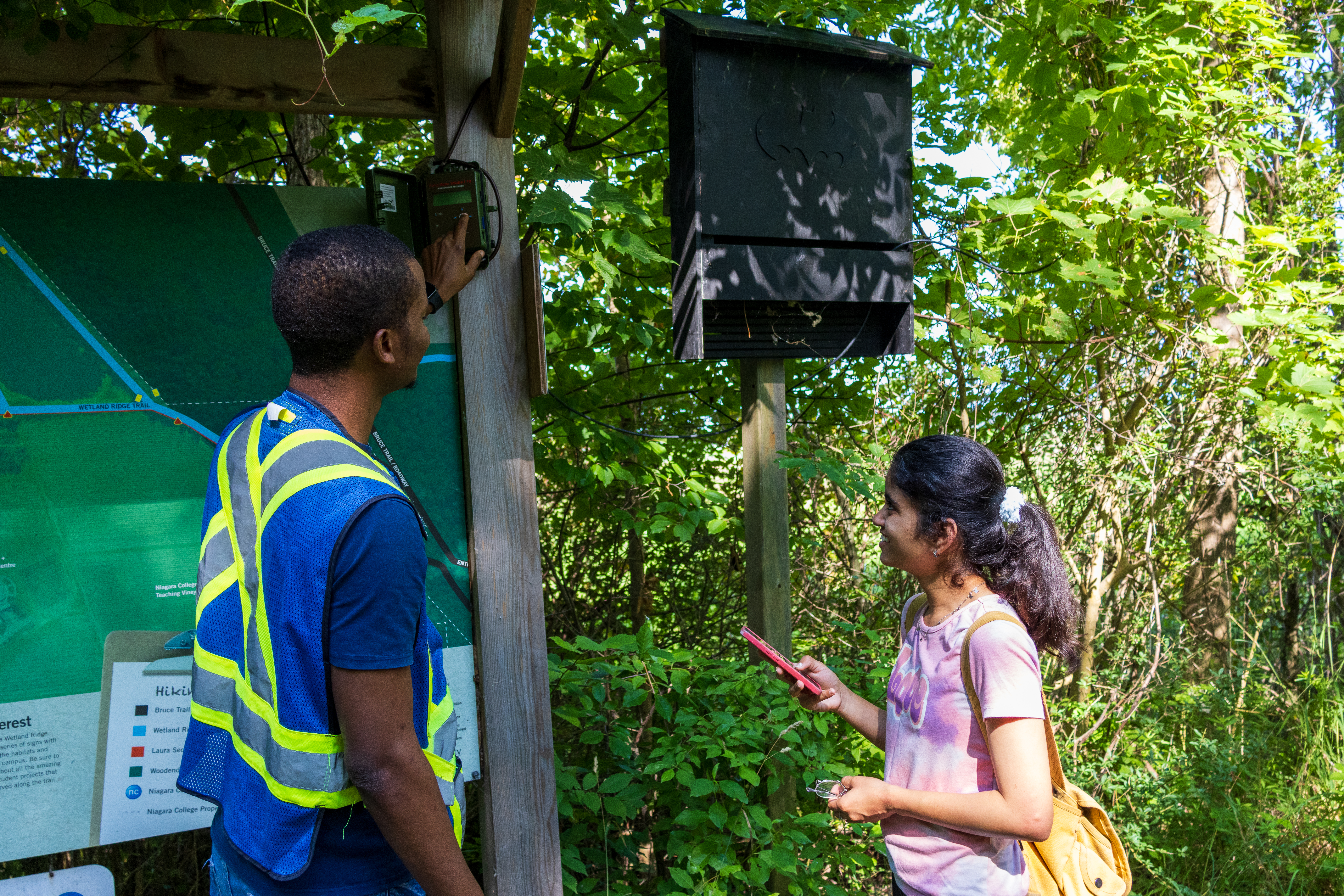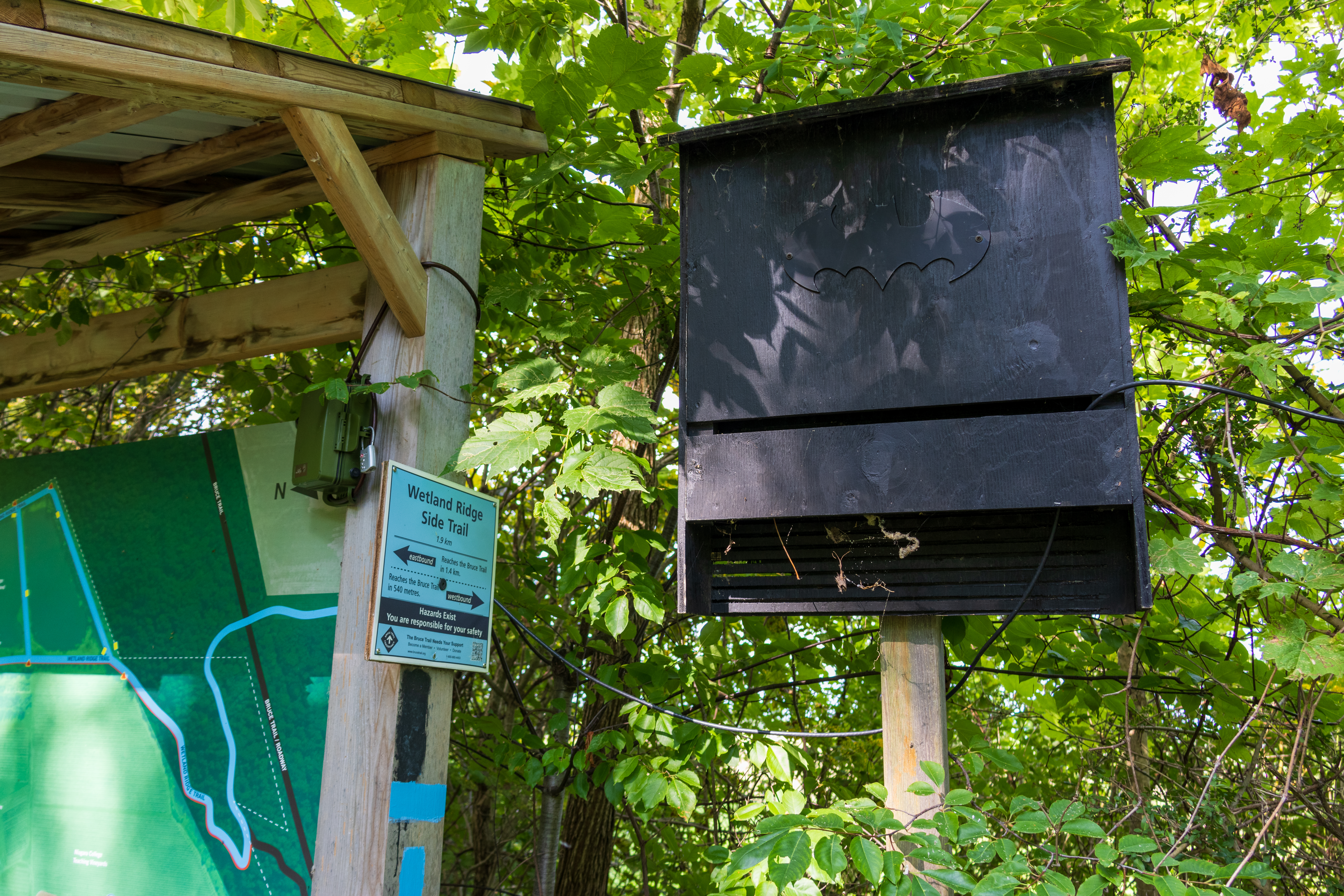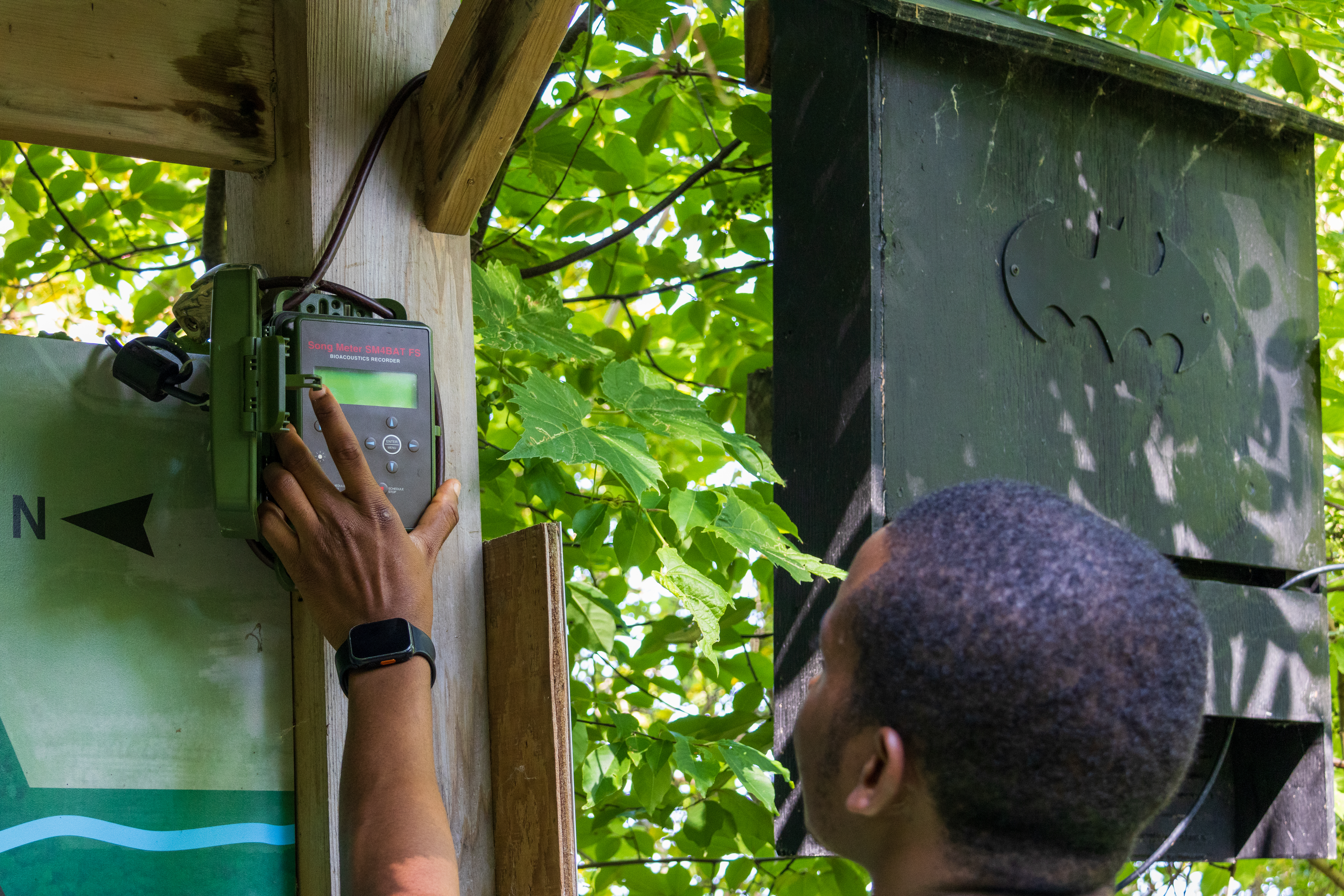Bat Monitoring

What is North American Bat Monitoring Program
The North American Bat Monitoring Program (NABat) is a collaborative program that aims to monitor and conserve bat populations throughout the continent. Through the use of standardized monitoring methods and data gathering, NABat seeks to offer vital information for comprehending and resolving the issues bats encounter.
Why is it vital to monitor bats?
Four of the eight species found in Ontario are seriously threatened by habitat loss and white-nose syndrome (WNS). The four endangered bat species have been detected around Daniel J. Patterson Campus in Niagara-on-the-Lake utilizing different approaches, according to the bat monitoring report of 2023. The difficulty results from a variety of monitoring techniques usage over the years and the lack of precise collection of data that generates relevant conclusions.
What is White-nose Syndrome?
White-nose Syndrome, caused by the fungus Pseudogymnoascus destructans is a fungal disease that interferes with the hibernation period of bats. WNS causes the bats to wake frequently resulting in rapid usage of their fat reserve during hibernation period often leading to death.
Bat Species found at the Daniel J Patterson Campus!

Eastern Small-footed Myotis (Myotis leibii)
The Eastern Small-footed Myotis, or Myotis leibii, is a type of bat found in North America that is distinguished by its dark brown fur and unusually short feet. It is a hibernating species which migrates short distance to find suitable hibernating site. Dwelling in caves, rocks, and cliffs, it consumes insects that are captured in air. Concerned about habitat destruction and white-nose syndrome, conservation efforts concentrate on roosting site protection and population monitoring.
Little Brown Myotis (Myotis lucifugus)
Little Brown Myotis (Myotis lucifugus) are small North American bats renowned for their flexibility and extensive distribution. Their distinguishing feature is the fleshy outgrowth covering the ear opening. The protrusion in small brown bats is long and slender, with a rounded tip. It is a hibernating species which migrate only short distance and usually roosts in caves, trees, and buildings, where it feeds on insects such as beetles and moths.
Northern Myotis (Myotis septentrionalis)
Northern Myotis, also known as Myotis septentrionalis are long eared bats with dull yellowish-brown fur and are about eight centimetres in length. The flesh-like extension with a pointed tip covering the ear is what sets them apart. The northern long-eared bat is found in boreal woodlands, where it prefers to spend its time in tree cavities and beneath loose bark. It is one of the hibernating species in Ontario.
Tri-coloured Bat (Perimyotis subflavus)
Tri-coloured bat (Perimyotis subflavus) are small pale brown bats with black, yellow and brown hairs on their back, hence it’s from where its name came from. They can be found in variety of forested areas and their maternity roosts are usually found in old forest and occasionally in barns. Tri-coloured bats are hibernating species and only travel short distances for migration. They eat spiders from webs along with flying insects.
Monitoring Method used at Niagara College

At Niagara College, the Acoustic Monitoring Method is utilized to identify the species and presence of bats. These acoustic monitors monitor for bat species’ calls and log them. In the summer of 2024, the Niagara-on-the-Lake Campus wetlands were site to six installed sound monitors. Students checked them once a week to get the data that has been recorded. After that, the recordings are examined utilizing kaleidoscope software, which allows for accurate bat species identification